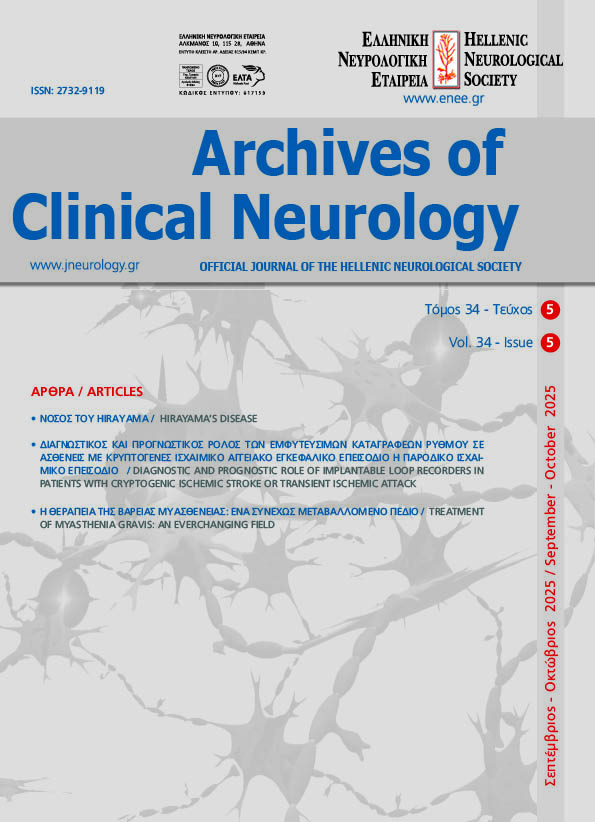TREATMENT OF MYASTHENIA GRAVIS: AN EVERCHANGING FIELD
Keywords:
Myasthenia gravis, immunotherapy, Novel drugs, Randomized - Controlled Clinical Trial, Adverse eventsAbstract
Myasthenia gravis (MG) is a chronic autoimmune disorder affecting the neuromuscular junction, characterized by fluctuating muscle weakness. It is primarily mediated by antibodies against acetylcholine receptor (AChR), muscle-specific kinase (MuSK) or low-density lipoprotein-related protein 4 (LRP4). However, seronegative patients may constitute 10-15% of all MG cases. Treatment of MG is traditionally based on corticosteroids and pyridostigmine, with the addition of steroid-sparing immunosupressive agents such as azathioprine, mycophenolate mofetil or rituximab, depending on the characteristics and the severity of each case. However, these therapies have not been rigorously evaluated in randomized-controlled clinical trials specifically for MG. During the last years, neonatal Fc receptor (FcRn) inhibitors and complement inhibitors have demonstrated a favorable safety and efficacy profile in MG patients within the context of randomized-controlled clinical trials. Therefore, they have been incorporated into daily clinical practice. Emerging agents of these drug classes and other novel therapeutic options, such as anti-CD19 monoclonal antibodies, Bruton’s Tyrosine Kinase inhibitors and Chimeric antigen receptor (CAR) T cells are currently being investigated as adjunctive therapies in MG patients. This narrative review aims to provide a comprehensive overview of current pharmacologic treatment strategies for MG, with particular focus on recently approved agents and investigational therapies under clinical development.


